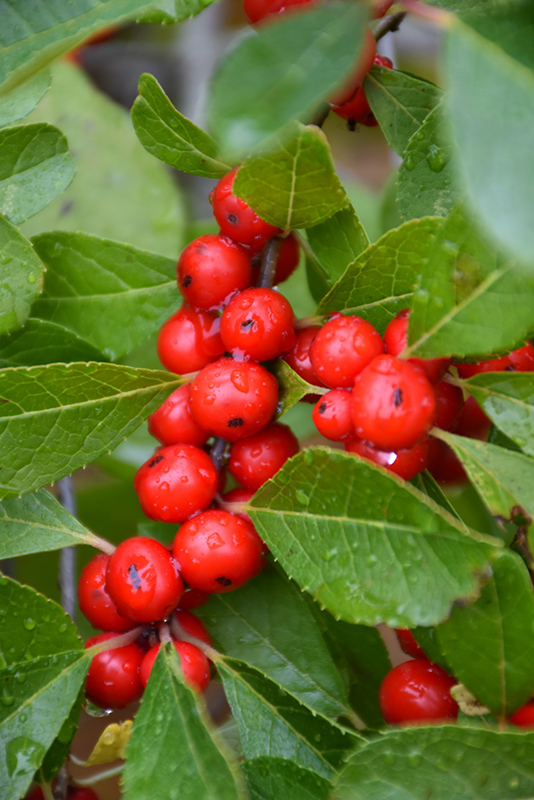Brunswick
422 Bath Road
Brunswick, ME 04011
1-800-339-8111
207-442-8111
Falmouth
89 Foreside Road
Falmouth, ME 04105
1-800-244-3860
207-781-3860
Cumberland
201 Gray Rd (Route 100)
Cumberland, ME 04021
1-800-348-8498
207-829-5619
Wildfire™ Winterberry
Ilex verticillata 'Bailfire'
Height: 8 feet
Spread: 5 feet
Sunlight:
![]()
![]()
Hardiness Zone: 4a
Other Names: Black Alder
Brand: First Editions
Description:
An interesting and showy fall shrub known for its brilliant red fruit; sheds leaves early in fall to reveal berries; spreads to form colonies, Southern Gentleman is recommended as pollinator; great in masses and particularly wet sites, needs acidic soil
Ornamental Features
Wildfire™ Winterberry is primarily grown for its highly ornamental fruit. It features an abundance of magnificent red berries from mid fall to late winter. It has forest green deciduous foliage. The pointy leaves turn gold in fall.
Landscape Attributes
Wildfire™ Winterberry is a multi-stemmed deciduous shrub with a more or less rounded form. Its average texture blends into the landscape, but can be balanced by one or two finer or coarser trees or shrubs for an effective composition.
This shrub will require occasional maintenance and upkeep, and is best pruned in late winter once the threat of extreme cold has passed. It is a good choice for attracting birds to your yard. Gardeners should be aware of the following characteristic(s) that may warrant special consideration;
- Suckering
Wildfire™ Winterberry is recommended for the following landscape applications;
- Mass Planting
- Hedges/Screening
- General Garden Use
- Naturalizing And Woodland Gardens
Planting & Growing
Wildfire™ Winterberry will grow to be about 8 feet tall at maturity, with a spread of 5 feet. It has a low canopy with a typical clearance of 1 foot from the ground, and is suitable for planting under power lines. It grows at a slow rate, and under ideal conditions can be expected to live for 40 years or more. This is a female variety of the species which requires a male selection of the same species growing nearby in order to set fruit.
This shrub does best in full sun to partial shade. It prefers to grow in moist to wet soil, and will even tolerate some standing water. It is very fussy about its soil conditions and must have rich, acidic soils to ensure success, and is subject to chlorosis (yellowing) of the foliage in alkaline soils. It is somewhat tolerant of urban pollution. Consider applying a thick mulch around the root zone in winter to protect it in exposed locations or colder microclimates. This is a selection of a native North American species.

